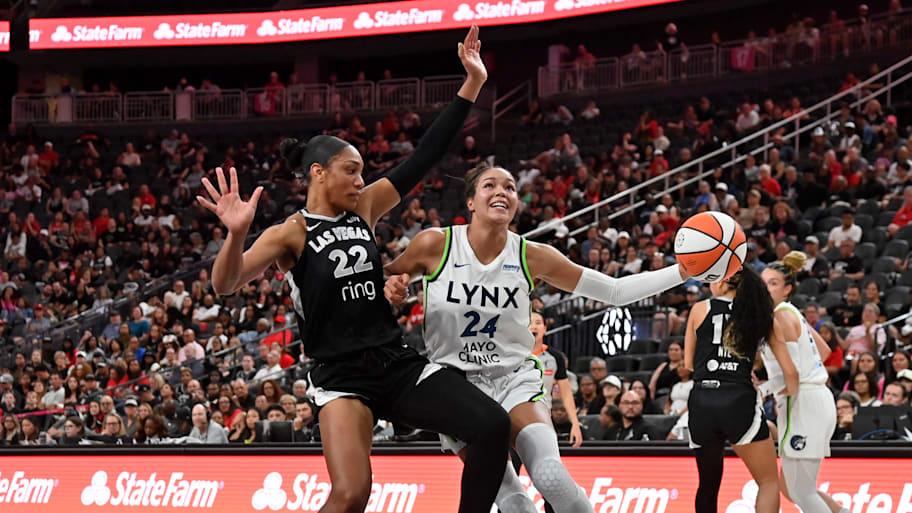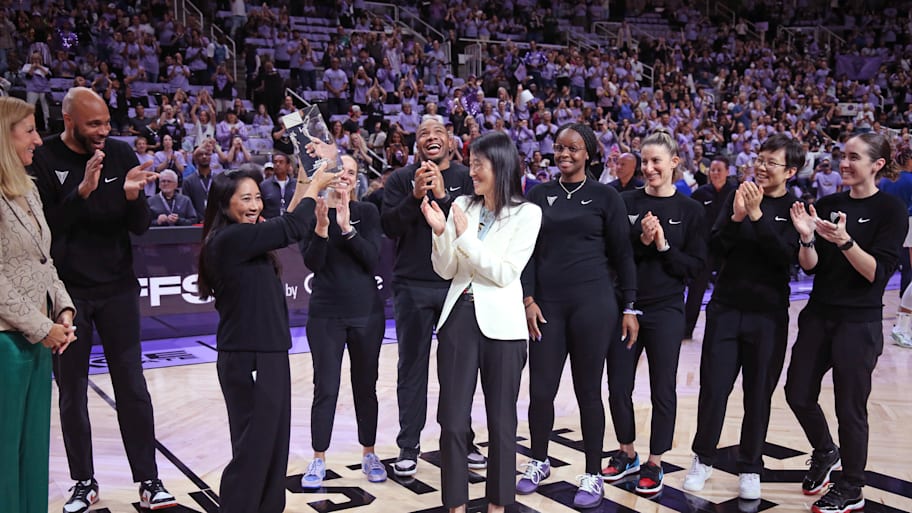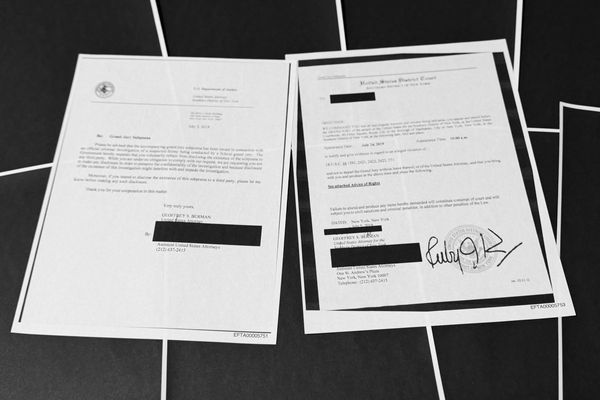
When the 2025 WNBA season started, many already had Napheesa Collier picked as this year’s Most Valuable Player. And for much of the season, that held up.
But A’ja Wilson had other plans.
After Collier suffered an ankle sprain and was out for three weeks, Wilson turned around the Aces’ underwhelming year into a 17-game winning streak as Las Vegas secured the No. 2 seed for the playoffs.
All of this has led to an exciting MVP debate as both players finished with eye-popping seasons—and no, we haven’t forgotten about Alyssa Thomas either.
Sports Illustrated’s voters—who both had Veronica Burton for Most Improved, Alanna Smith for DPOY and Paige Bueckers for Rookie of the year—explain how they decided on their MVP picks, talk through their end-of-season-awards differences and hand out a couple of new awards, too.
How did you make your MVP decision?
EB: Had I been asked on Aug. 1, I’d have said it was hard to imagine what Collier could possibly do (or not do) to finish the season without my vote for MVP. But what I was failing to imagine was Collier getting sidelined by a sprained ankle for three weeks while Wilson pulled the Aces through a historic win streak. Their final stat lines ended up remarkably close in a number of areas: Collier and Wilson were right on top of each other in points, assists and steals. But the biggest difference maker for me ended up being what they meant for their respective teams.
The Lynx are a solid team without Collier on the floor and an incredible one with her. (They outscored their opponents by 4.9 points without her and 16.6 with her.) The Aces are a lackluster mess without Wilson and a winning team with her. (They got outscored by opponents by 15.2 points without her and outscored them by 11.7 with her.) Collier is the best player on the best team in the league—which, of course, makes a compelling award case on its own, and it’s one worth considering heavily. But I found what Wilson did to be a more forceful statement of “value.” She took an Aces squad that conceivably might have missed the playoffs and made them into a high seed. No individual player meant any more to her team. I don’t believe that makes for the only worthwhile interpretation of “value”: I realize that an individual player does not control her roster, and I don’t want to punish a player for her team being too good, essentially. But given the context here—Minnesota and Las Vegas finished No. 1 and No. 2 in the WNBA—I found this framework useful. This is not comparing the leader of a title contender to that of a middle-of-the-road squad. It’s looking at how the best players shaped the best teams in the league.
While this formed the basis of my case, there were a few tiebreakers, too. Wilson had a notable edge in rebounds and blocks. The fact that she was able to sustain her performance while appearing in 40 games to Collier’s 33 was not a huge point for me, but in a close race, it did give a bit of an edge. (Collier’s injury meant that she played in a lower percentage of team games than any previous WNBA MVP.) This was an incredible, historically efficient season for Collier. But I ultimately felt I had to give my vote to Wilson.
CB: I deliberated on this a lot. This year feels like Collier’s year. And in any other scenario she’d win MVP. She became the second player in league history to join the 50-40-90 club (finishing the season shooting 50% from the field, 40% from three and 90% from the free-throw line). She averaged 22.9 points and 7.3 rebounds. She was the best player on the best team. All of that should be enough for an iron-clad MVP case, however Collier is playing basketball at the same time as Wilson.
The three-time WNBA MVP looks poised to win her fourth award after leading the Aces on a stunning turnaround that included a 17-game winning streak. Wilson ended the regular season with a league-leading average of 23.4 points per game and a second-best 10.2 rebounds per game. There is no overstating Wilson’s value to the Aces, boasting the highest usage rating in the W (30.7%) of players who played considerable minutes. Wilson’s sterling résumé and her irreplaceability on the Aces, coupled with the fact that Collier was sidelined due to injury for 10 games, inched Wilson above Collier on my MVP rankings.
What about Alyssa Thomas?
EB: Thomas can be difficult to appropriately evaluate: There is no player quite like her. And this may have been her best season yet. The career year for the perennial All-Star saw her shooting even more efficiently and leveling up her playmaking. She set league records for both assists and triple-doubles. Yet with the cases presented by Wilson and Collier… I just couldn’t justify ranking Thomas higher than third. There is perhaps no one who impacted the game as broadly as Thomas when her playmaking ability is considered alongside her defensive skills. It’s not hard to imagine a year in which this performance was awarded with an MVP. But this year, going up against how Wilson turned around the season for Las Vegas and Collier led a best-in-class Minnesota, it finished in third for me.
CB: Thomas’s talents are almost beyond words. What she does on the basketball court is nothing short of a miracle. The do-it-all Swiss Army knife for Phoenix also put together an MVP-worthy season, which featured an unprecedented eight triple-doubles. She averaged 15.4 points, 8.8 rebounds and a league-leading 9.2 assists this season as the engine for the Mercury. She doesn’t have the scoring numbers that Wilson and Collier have, but she impacts games in the minutiae. “She sees things that others don’t,” said Mercury coach Nate Tibbetts. This year, maybe more than any other, felt like splitting hairs, and Wilson and Collier’s production and impact on the defensive end gave the two an edge.

Who was your Coach of the Year?
Emma Baccellieri: Karl Smesko. This was perhaps the hardest award for me to decide on: Natalie Nakase presented a very compelling case and was completely deserving. Both are first-year coaches. Both led their team to the playoffs. But they faced very different challenges, and ultimately, I gave the slightest of edges to Smesko. Atlanta returned four of its five biggest contributors from last year. He got them playing like an entirely different squad. Smesko took an offensive style that he made all his own in the college game and showed how it could be successful in the pros while adapting it for the specific needs of his current players. This group was dead-last in a number of key offensive metrics last year: No team assisted less or had a worse shooting percentage than Atlanta. Smesko turned all of that around by introducing quality ball movement and far more efficient shooting. A middling defense (sixth in the league in defensive rating in 2024) became a great one (second in ’25). Smesko got these pieces to fit together in a way that would have been unthinkable under a different staff last year, and for that, he’s my coach of the year.
Clare Brennan: Natalie Nakase. What she did with Golden State in its first season in the league as an expansion team is remarkable, but how she did it also deserves praise. The Valkyries had few superstars on their roster, but Nakase managed to get the most out of each of her players. (Burton, who won Most Improved Player, can attest to that.) She also got her squad to buy into a dogged, disciplined game plan, with the group playing hard night in and night out. Making the playoffs in its debut WNBA season, Golden State will go down in the history books, and so will Nakase.
How about Sixth Player of the Year?
EB: Natisha Hiedeman. This one was very close for me between her and Naz Hillmon. They had very similar numbers for scoring (9.1 PPG for Hiedeman versus 8.6 for Hillmon) and for assisting (2.8 versus 2.4)—Hillmon, though, stood out as a far more productive rebounder and defender. But what tipped the scales for me was the definition of “sixth player.” Hiedeman better embodied that for me: She came off the bench for all 44 games, trusted as a true spark who provided a lift for the Lynx, even closing out games. The best team in the league would not have been the same without her. Hillmon, on the other hand, played well enough to see her role change over the course of the year: She started the last 17 games of the season for Atlanta. Hiedeman, to me, best exemplified the concept of the award.
CB: Naz Hillmon. Candidly, this award’s name may no longer apply to Hillmon, who has played her way into Atlanta’s starting lineup. Still, she came off the bench in more games than she started this year, so she fits the Sixth Player of the Year bill. Hillmon has been sensational in her fourth season with the Dream, and first under Smesko, improving in nearly every statistical category. With the second highest plus/minus (+7.6) in the league behind only Collier, Hillmon impacts the game more than just draining buckets. But speaking of which, Hillmon hit some clutch shots down the stretch for Atlanta this year, including a game-winning three against Dallas in July. This moment is made more impressive when considering she went 1-for-6 shooting from beyond the arc in her first three WNBA seasons.
Naz Hillmon with the game-winner.
— Underdog WNBA (@UnderdogWNBA) July 31, 2025
21 PTS (career-high)
5 3PT (career-high)pic.twitter.com/ENbZqL6FJi
If you could make up a new WNBA award, what would it be?
EB: Biggest Dawg. There might not have been anyone I was left wishing I could have included on my ballot more than Saniya Rivers. (I don’t think the WNBA is yet at the point of needing Second-Team All-Rookie, but with continued expansion on the horizon, I think it will be there very soon.) And while Rivers may not have been able to crack First-Team All-Rookie in this crowded year for young talent, she put together a performance deserving of some recognition, and this feels like the perfect award for it. The Sun guard became the first rookie since 2008 to record more than 60 steals and 35 blocks in a season. Her scrappy defense was one of the biggest highlights of a tough year in Connecticut. Rivers won the award for top competitor at Kelsey Plum’s Dawg Class when she was still in college in ’24. But she demonstrated this year that she could pull down a similar honor in the pros, too.
More WNBA on Sports Illustrated
This article was originally published on www.si.com as A’ja Wilson or Napheesa Collier: Who Will Be the 2025 WNBA MVP?.







